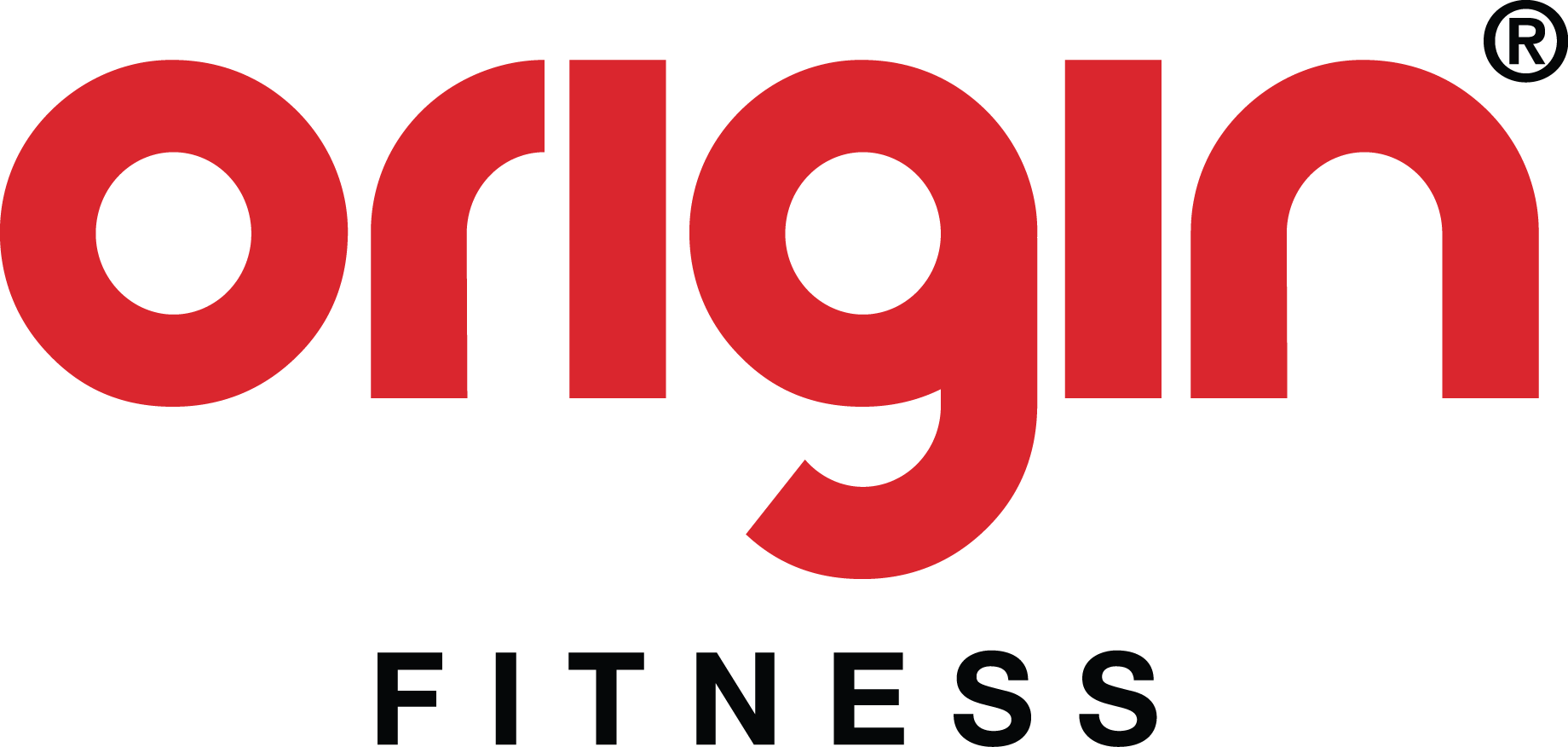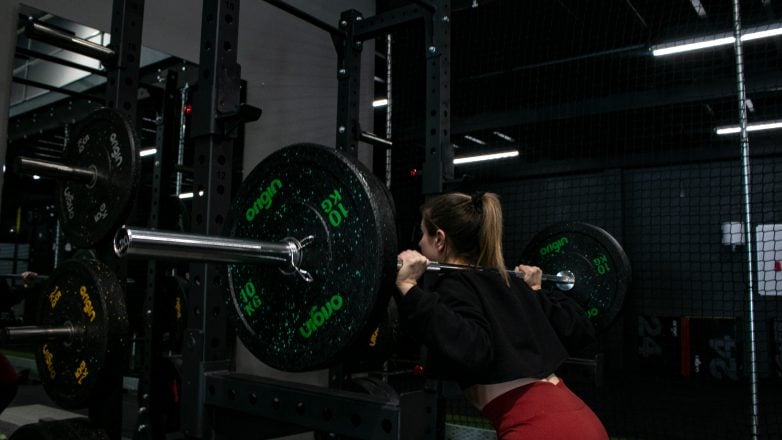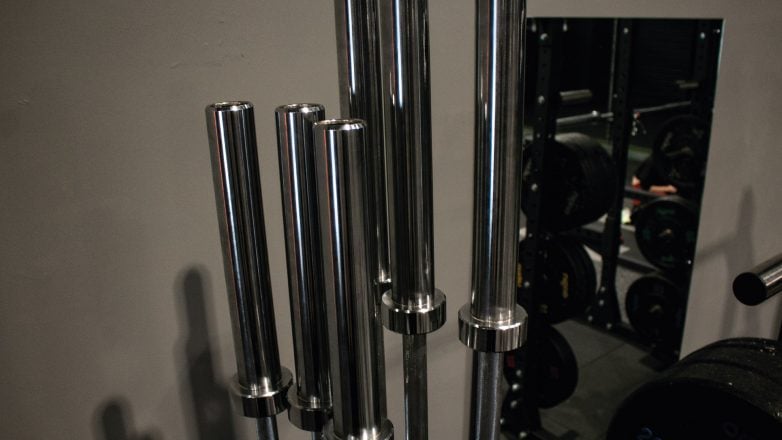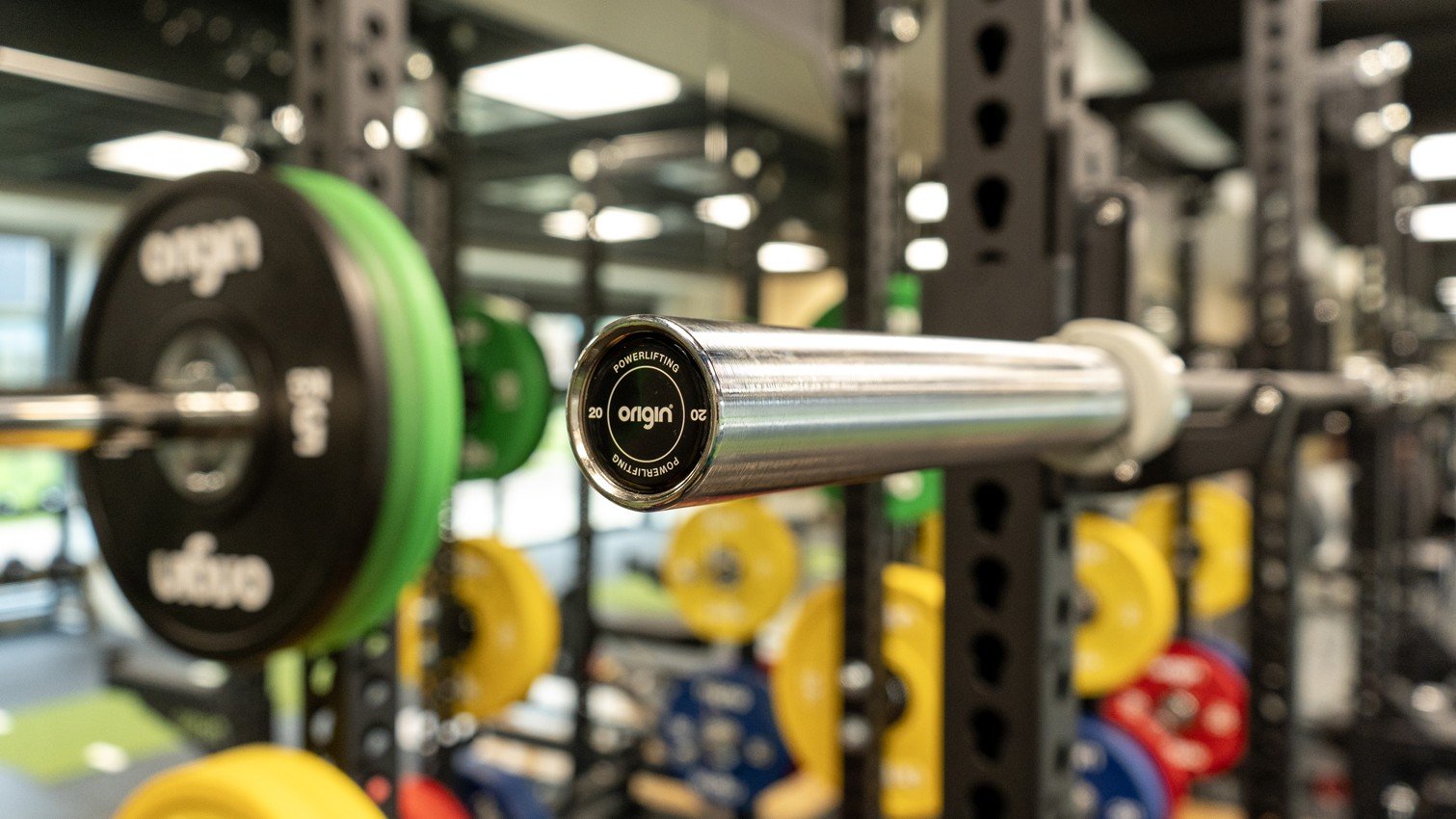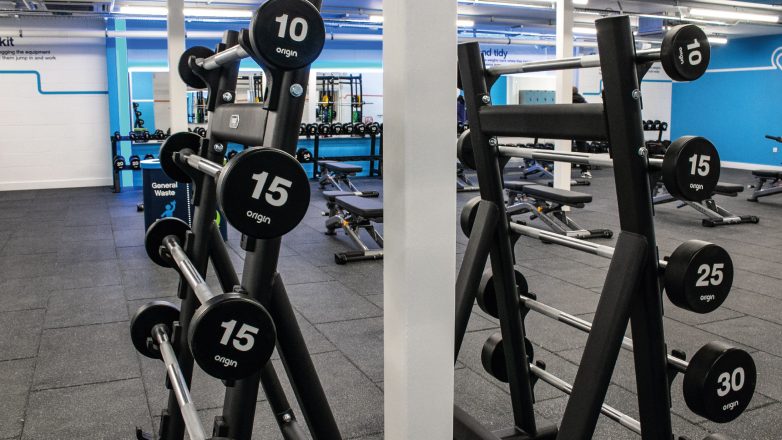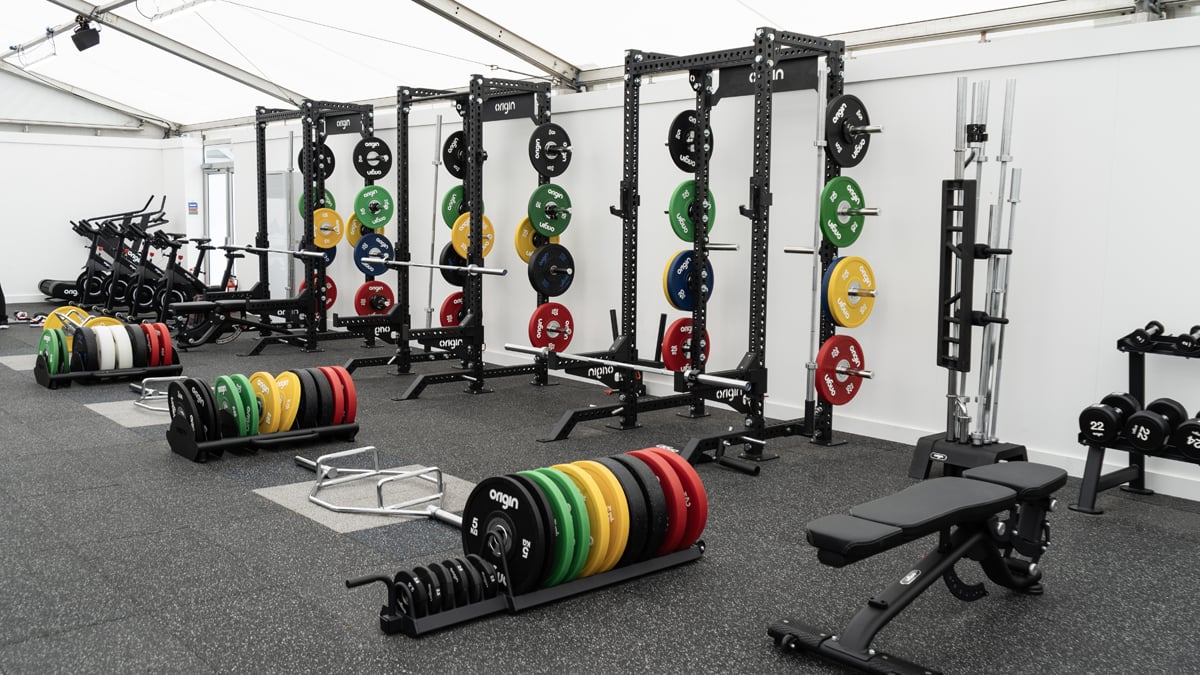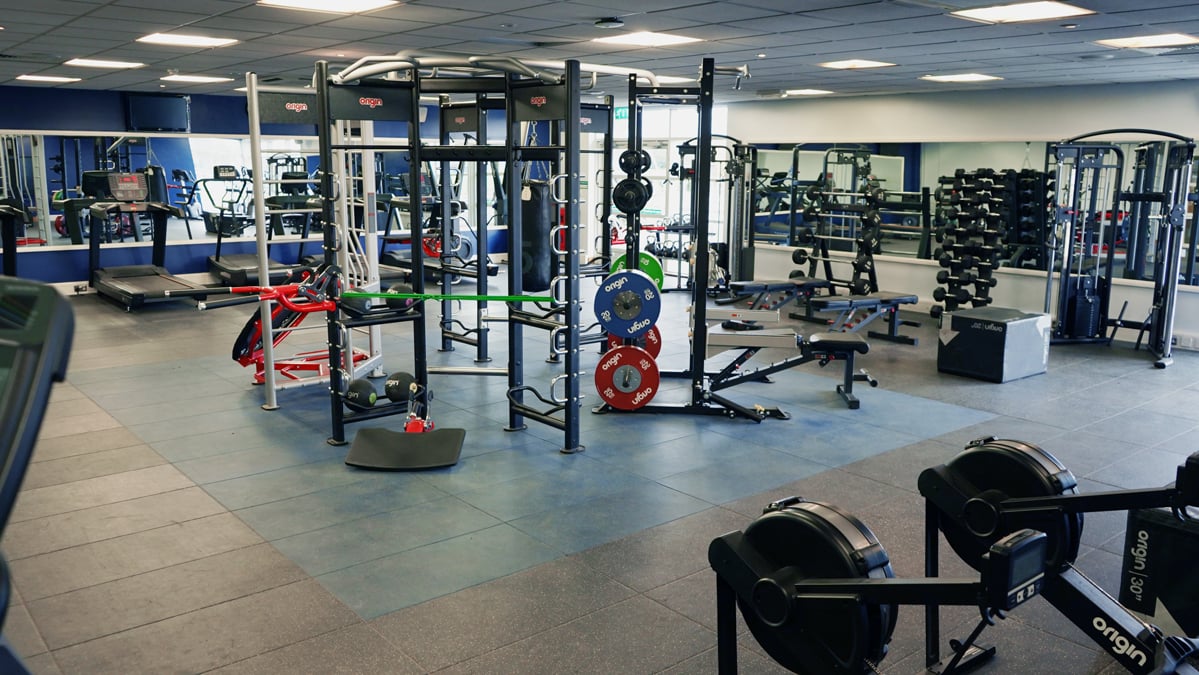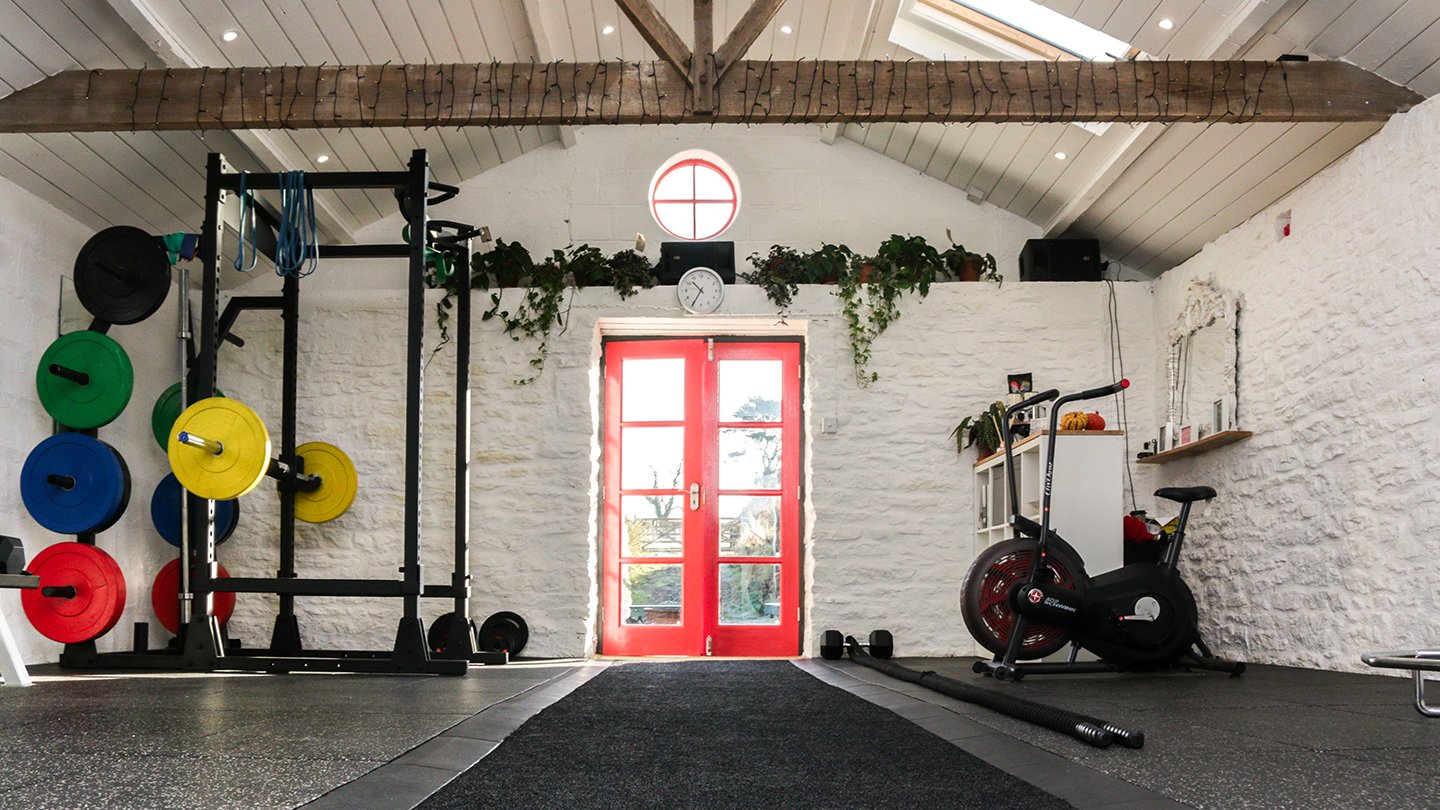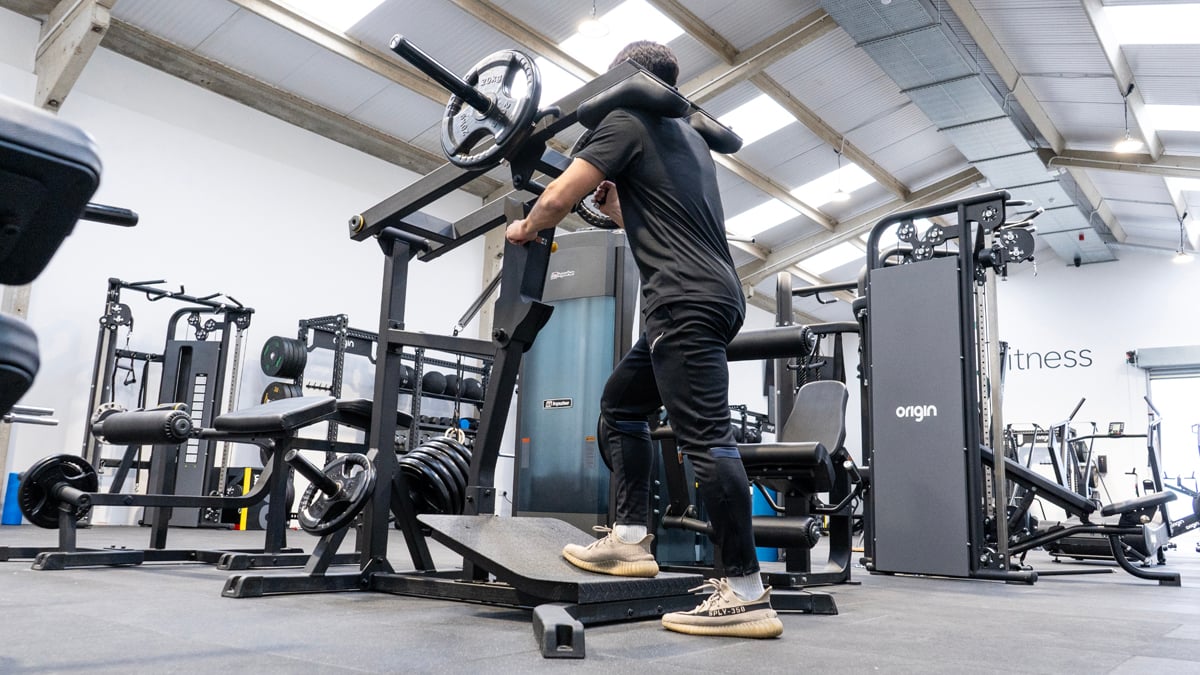0%
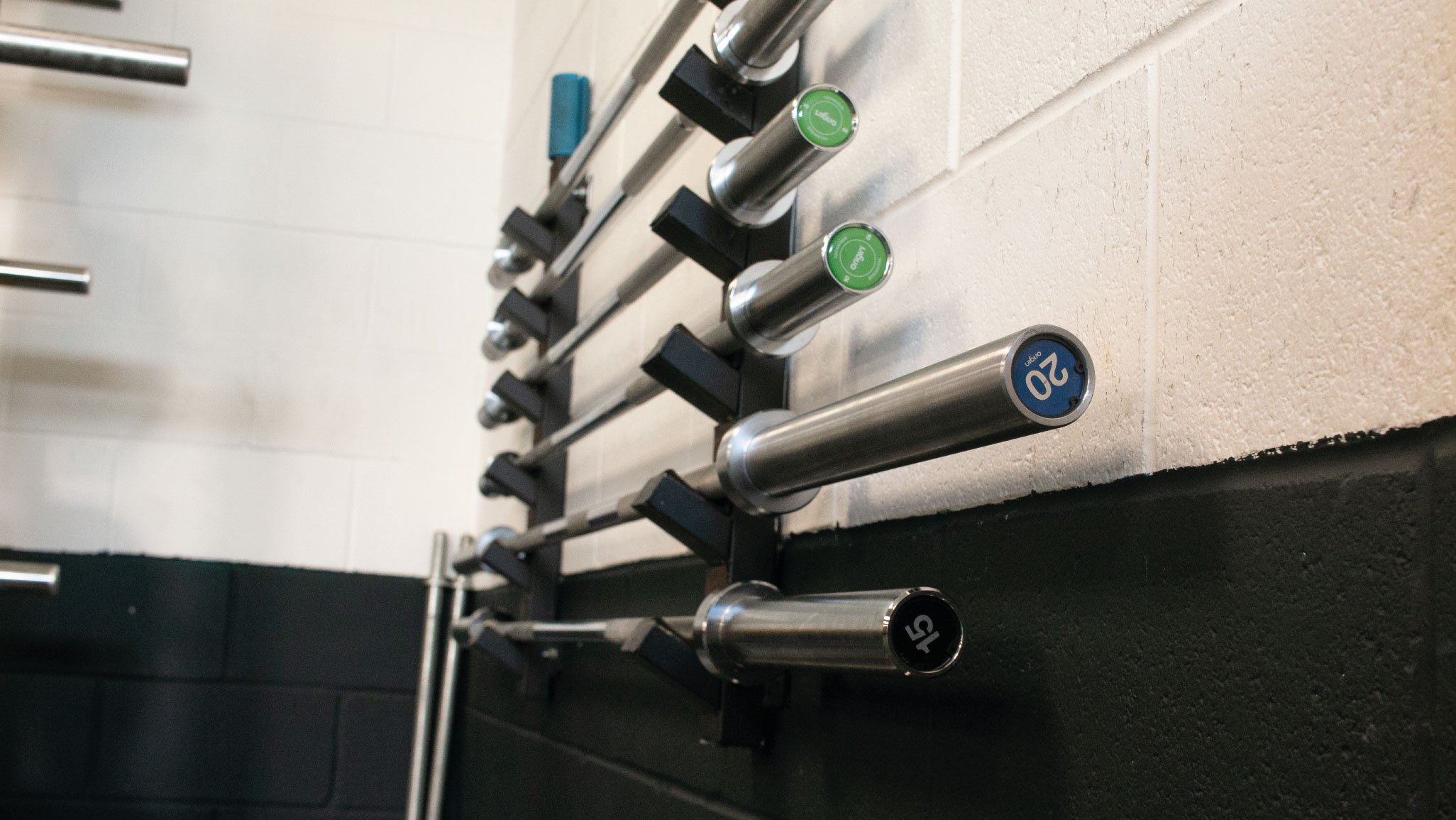
Our Barbell Buying Guide is here to help you determine which barbell is the best fit for you.
As if weight lifting wasn't complicated enough, different types of lifting require different types of barbells. Olympic lifting, powerlifting, strongman, CrossFit, or general gym usage all have different standard bars. Of course, this doesn't mean that it is set in stone. You can technically use any bar for any lift, but if you want to look like a pro, let us guide you in choosing the right weight lifting bar for your needs.
Here's what we'll cover in this barbell buying guide:
- What is a barbell? 15kg
- The difference between women's, men's, and youth bars.
- What to consider when purchasing a barbell.
- How Olympic, powerlifting, and general bars differ.
- Frequently asked questions.
In case you have already found the perfect barbell, and want to maintain it in top condition, check out our Barbell Maintenance Guide.
What is a Barbell?
Essentially, a barbell is a long metal bar used for lifting various weights in various different sports. Or in other words, a weighted bar used for exercise.
Weight Lifting Bars: Men's, Women's & Youth
Barbells come in different weights depending on the goals and requirements of the activity . 20kg weightlifting bars The reason for this is because end-users find this bar most useful as it can be used for multiple common gym exercises. Taking that into consideration, it is the most commonly used bar on the gym floor.
Despite 20kg being widely used, weightlifting bars can be weighted at three different weights for Olympic competition: 10kg, 15kg and 20kg. Some companies cater to all three, but not all do. These bars can be hard to distinguish between, but usually they can be identified by different amounts of knurling, length of the bar, thickness of the bar and sometimes by the weights of the bar branded onto the end.
The following are the specifications for each bar:
Men’s Barbells
Length: 2.2 metres (86.4 inches)
Diameter: 28mm (Olympic) or 29mm (Powerlifting)
Weight: 20kg / 44lbs.
Women's Barbells
Length: 2.01 metres (79.2 inches)
Diameter: 25mm
Weight: 15kg / 33lbs
Youth Barbells
Length: 1.7 meters (60-67 inches)
Diameter: 25mm
Weight: 10kg / 22lbs
Features to Consider When Buying a Barbell
Whip of the Bar
The whip is the flexibility of the bar, a common term for the ends of the bar bouncing at the end of a repetition, or a phase of a lift.
Experienced lifters can use this during certain transitions in their lifts. For example, between the clean and jerk, they can bounce the bar off their chest and propel the bar up by using the momentum of the bend coming upward into the jerk position.
The main factors in determining the amount of whip are; the material from which the bar is made, and the diameter of the bar.
The thickness of the plates used can also affect the whip that the user can generate. By contrast, bumper plates, which spread the weight load on the bar, cause the bar to behave completely differently than calibrated weight plates, which take up less sleeve space as the plates are thinner. This allows users to load more plates on to the barbell and keeps the weight nearer to the centre of the bar.
Barbell Sleeves
The sleeves make up the part of the barbell that will determine how much spin the bar will have. Spin will be enabled via the use of either bearings or bushings.
Bushings are placed between the shaft and the sleeve. They offer low friction and are most commonly made of brass to ensure longevity. Like the Origin 20kg Cross Training Bar, which has copper bushings for rotation.
Bearings offer a faster, smoother and quieter spin. They are usually made from high-quality small needles or metal balls that roll within the sleeve. The Origin 20kg Competition Weightlifting Bar is a good example of a bar that uses needle bearings as the rotational system.
Most powerlifting or general-purpose bars will use bushings in the sleeves of the barbell. Bearings are usually found in high-end and more expensive Olympic weight lifting bars.
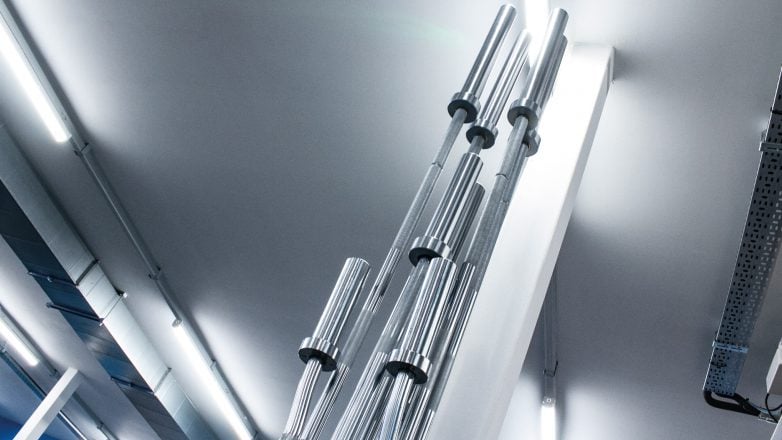
Barbell Strength
Barbell strength can be determined using two measurements – the yield strength and the tensile strength.
Yield strength is the amount of weight it takes to permanently bend and deform the bar. The yield strength is tested statically by simply adding weight to each end of the barbell.
As mentioned earlier, some whip (elastic deformation) may be desirable for various reasons, depending on the discipline and exercise.
Tensile Strength is the breaking point of the barbell. This is rated in pounds per square inch (PSI). 165,000 PSI is a good minimum to look for when purchasing a new weight lifting barbell. Generally, anything over 180,000 PSI is a decent barbell. Higher-end manufacturers tend to produce weight lifting bars with either a 190,000 or 215,000 PSI rating. Some of our latest Olympic Bars are extra durable and have a tensile strength of 216,200 PSI, exceeding the industry standard.
Load Capacity
Load capacity is determined by the length of the sleeve which is commonly 433mm (IPF or IWF approved). However, this can be longer on barbells manufactured for niche powerlifting federations.
The width of the plate that you use also determines the load capacity. Competition powerlifting weight plates, for example, are much thinner than cast iron gym plates or Olympic Bumper Plates This is due to the much greater loads handled in the powerlifting disciplines, so you can stack them closer to be able to add more weight to the bar.
Olympic Weight lifting bars require less load. This is because as the overall load potential is much less due to the complex movements performed. The barbells must be wider and the barbells must be wider and designed to absorb shock as the plates are dropped from overhead. This also helps to protect the barbell.
Finish on the Bar and Sleeves
The finish on a barbell serves a number of purposes. It adds to the “feel” of the bar in the hands, aid (or hinder) grip, and can help protect against rusting.
Bare steel bars offer a nice grip with a natural feel. However, bare steel is more likely to rust so will need more regular maintenance. We've set up this guide to barbell maintenance to help you take care of your bars in the long term.
Black oxide bars offer more oxidation protection than bare steel and do not require as much maintenance as bare steel.
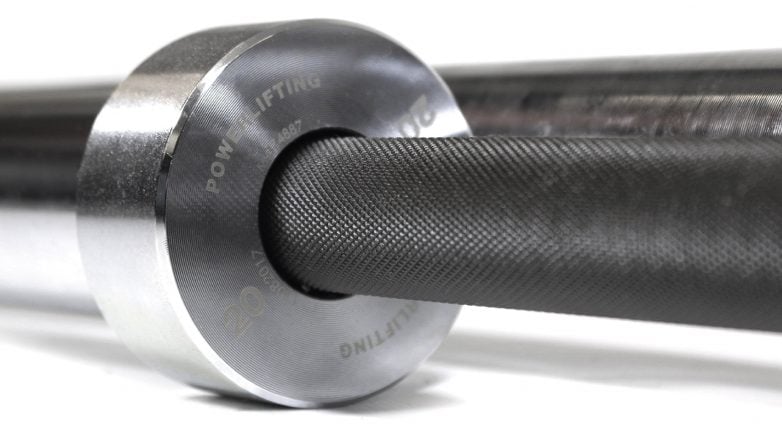
Zinc finish protects the barbell even more from rust than the steel and black oxide finish . However, they can quickly lose their sheen, so more regular maintenance is required to keep them looking their best.
Chrome finish bars are the most expensive finish, but offers the best protection from rusting. Depending on the quality, chrome finish bars can feel slightly slippery compared to bare steel. However, the higher-end barbells tend to have excellent knurling to compensate for this.
Stainless steel offers a similar, some say even better, feeling to the barbell than bare steel. Oxidation protection is very similar to the chrome finish. Stainless steel is usually found on the most high-end weight lifting bars.
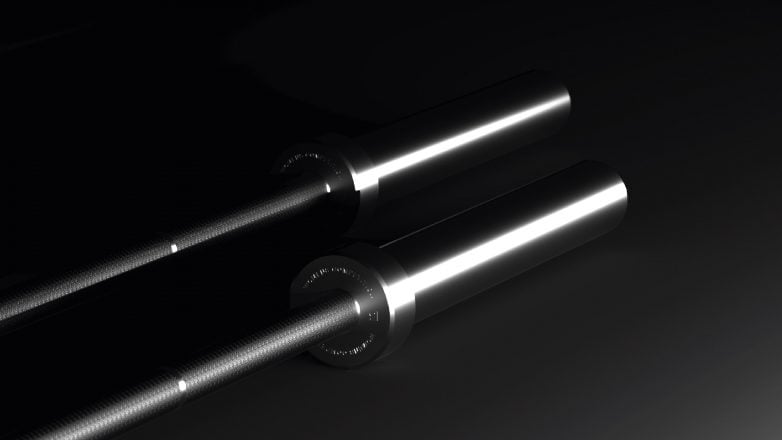
Knurling
Knurling is made from two sets of diagonal grooves cut into the barbell, usually going in opposite directions. This forms tiny diamond shapes, which dig into the skin on your hands when you hold the bar and assist with grip.
The width and depth of these grooves will determine how “aggressive” the knurling is on the barbell. More aggressive knurling is primarily to assist with heavy deadlifts, where grip failure is the most likely.
The further in the knurling comes, the narrower you can effectively grip the bar. Weight lifting bars designed for powerlifting tend to have more knurling towards the centre of the bar for the use of sumo lifters who grip inside of what would be a normal grip for a conventional deadlift or clean.
A portion of knurling in the centre of the bar (known as central knurling) helps with grip on your back during squats. Both IWF (International Weightlifting Federation) and the IPF (International Powerlifting Federation) specify that a men’s barbell should have this.
Some specialised squat bars have a very wide central knurling to allow for use by larger men.
As mentioned earlier, the knurling is less aggressive on men’s Olympic bars, as when they catch a clean they don’t want aggressive knurling at the neck, but it is still there to assist with squats.
A woman's weight lifting bar traditionally has no centre knurling. However, if squats are being performed, the men's bar is used due to increased knurling and the wider bar being more comfortable on the upper back.
What Type of Knurling Suits Which Lifter?
The type of knurling comes down to preference. However, generally, lifters with smaller hands, may favour more aggressive knurling as their grip is already at a disadvantage.
Weight lifters with larger hands may choose whichever feels most comfortable or offers the most grip support.
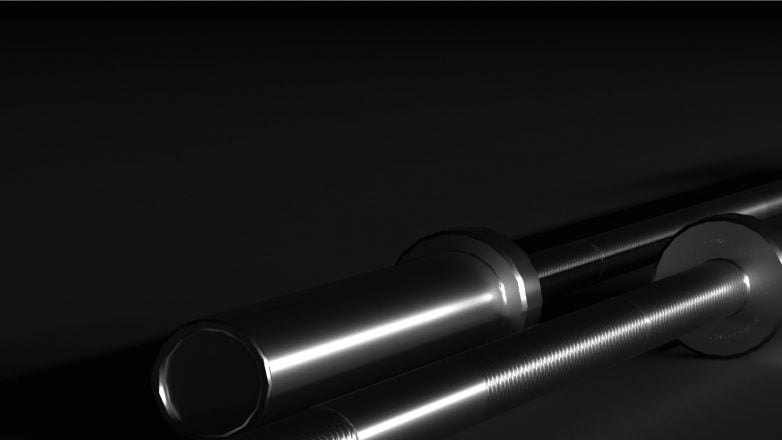
What Type of Barbells are Available?
Now that you have a better understanding of the features to look for when purchasing your weight lifting bar, let's take a closer look at the different types of barbell.
Remember: When looking to buy a barbell, the type of lifting and the exercises you will be doing ultimately determines the type of barbell you will purchase.
Olympic Weight Lifting Bars
Olympic bars are designed for the two main Olympic lifts - the snatch, and clean & jerk.
They are usually smaller in diameter, but only by 1mm. However, this makes a difference to your grip strength.
The knurling on Olympic weight lifting bars is not as aggressive as other weight lifting bars. There must be enough to provide a good grip, but not so much that it rips your hands apart when the bar spins in your hand during the catch phases of the lifts.
Knurling is marked out for the snatch lift and is further apart than a power bar which is marked out for the bench press.
Olympic bars also require collars that spin. The spin on the bar deadens the rotational force of the barbell during the pull and catch phases of an Olympic lift (during snatch and clean) or the dip and drive (jerk or push press) reducing the impact on your wrists and shoulders.
Olympic bars also require more bend and flexibility. As mentioned earlier, this "whip" (stored elastic energy) can help during the initial pull and the catch phase of the lift to avoid unnecessary damage to your collarbones.
Bars that have achieved IWF accreditation are widely recognised as the best on the market (with the most accurate tolerance in relation to the bar's weight) and only these types of bars are sanctioned for use in international competition.
There are IWF compliant bars that offer the same high quality as accredited bars but come without the heavy price tag. Our latest range of Olympic Weight Lifting Bars offers a selection of IWF and IPL compliant bars.
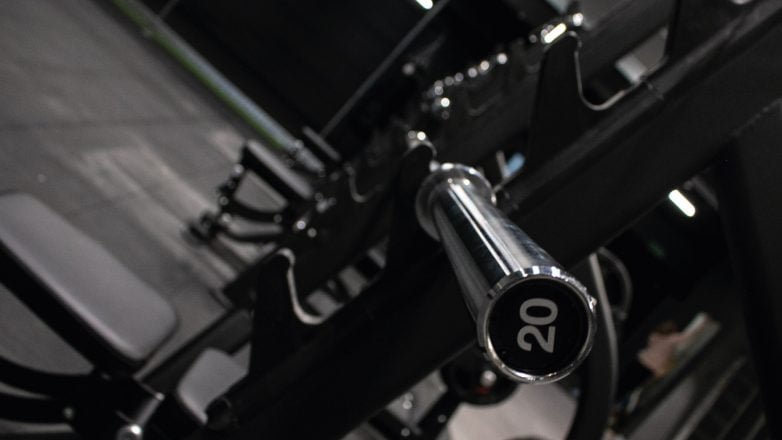
Powerlifting Bars
Weight lifting barbells for powerlifting are designed for the big three lifting exercises: Squat, Bench Press and Deadlift.
Knurling on powerlifting bars is much more aggressive to help the lifter grip the bar during heavier deadlift attempts.
The knurling comes in further than an Olympic bar to allow for narrower grips during deadlifts and a more secure squat.
Powerlifting barbells are rigid, stiff bars, and therefore do not deform, when compared to Olympic bars, under load (or whip). This means they would be a poor choice for Olympic Lifts - you will feel the difference if you catch a clean slightly wrong with a power bar. It sometimes feels like your collar bones have been hit with a sledgehammer!
Specialised deadlifting bars are available that are longer and have more whip. This means the endplates are left on the ground for longer, which allows the lifter to get into a stronger position before the full load comes off the floor.
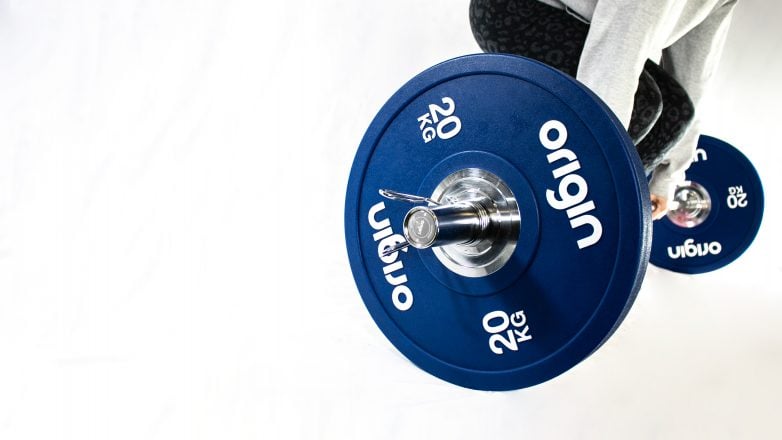
Hybrid, Training & Multipurpose Weight Lifting Bars
Hybrid weightlifting bars are useful for gyms, CrossFit boxes and facilities that offer both Olympic weight lifting and Powerlifting.
They are great for beginner and intermediate weight lifters as they have the characteristics of both a powerlifting and Olympic weight lifting bar.
Hybrid barbells usually have two sets of fine knurling markings to accommodate for both Olympic lifting and power lifting standards.
A Few Other Types of Barbell
In addition to the specialist powerlifting and weightlifting bars we've discussed there are, of course a whole range of other types of barbells available to buy for your home or gym. Here we've listed just a few of the most popular ones along with their most common uses.
Technique Bars
As the name suggests this isn't a competition bar by any means. This is a lightweight bar that's used as a training tool for technique work that requires a something that weighs more than a broom handle or PVC pipe, but not as heavy as a standard Olympic barbell.
Technique bars are usually made from aluminium to ensure they are lightweight - normally ranging from 5kg to 13kg.
Hex Trap Bar
The Hex Bar (or Trap bar) is an interesting barbell variation that is most commonly used in the gym for deadlifting as an alternative to the traditional straight bar deadlift. Many people prefer the trap bar deadlift because due to the load being placed in line with the user rather than off centre it puts less stress on the lumbar curve, especially at the start of the movement. This makes it a common choice for users with back issues. Hex bars are normally 6ft or 7ft long and weigh around 25kg and 30kg respectively.
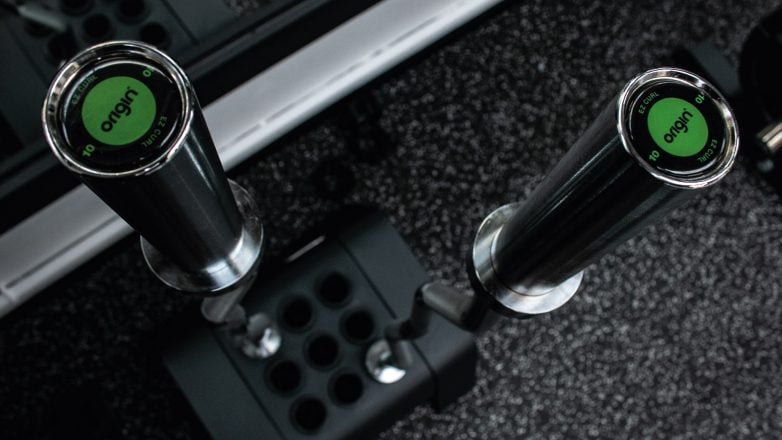
EZ-Curl Bar
The EZ Curl bar is a shorter barbell variation which tends to be quite light weight and has a distinctive jagged shape. This is great for users who experience discomfort in their wrists when using a straight bar for curls (the angle of the EZ Curl bar lets them grip the bar in a more natural position).
Fixed Barbells
Fixed barbells are more commonly found in a health club or high-street gym setting than in any sports performance, weightlifting or powerlifting facility. These are a durable convenience item that doesn't require any set-up time like adding collars or plates. Fixed barbells are generally around 110mm long and range in weights from 5kg up to 45kg.
Summary
Choosing the right type of weight lifting barbell can be very challenging. There are many different features and types of bars to consider when making your final decision.
We hope that this barbell buying guide provides all the information and details required to make an informed choice to ensure you buy the right type of weight lifting bar for your needs.
If you have any questions or require more advice please call 0333 2000 750 to speak to one of our fitness equipment advisers or contact us via [email protected]
Contributors to the barbell buying guide article include:
Lawrence Judd.
Marc Keys, Cast Iron Strength, Edinburgh Rugby.
John Clark, Strongman.
Sean McGhee, Product Manager, Origin Fitness
